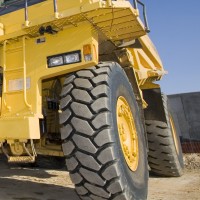
The open cut mining sector of the future is likely to be an eerie place, combining driver-less trucks, drills and haulage trains with plant controllers monitoring operations by remote from central control stations 1000 kilometres away in a major city!

The open cut mining sector of the future is likely to be an eerie place, combining driver-less trucks, drills and haulage trains with plant controllers monitoring operations by remote from central control stations 1000 kilometres away in a major city!
What is an Autonomous Haulage System (AHS)?
AHS uses state of the art satellite equipment to activate unmanned machinery in an open pit mining environment. The process involves receiving a load, moving the load and completing the dump at the stockpile. These mesmerising machines are not however, controlled by remote control – they operate via a GPS system with an inbuilt navigation and safety system. They also have a device to detect proximity to the side of the road and a radar to detect obstacles on the road.
Since Rio Tinto rolled out their fleet of 150 automated trucks for a two-year trial in the Pilbara, this fleet has operated every day, 24 hours a day, and moved more than 42 million tonnes of material in approximately 145,000 cycles. They have travelled more than 450,000 kilometres.
So why are the mining giants introducing these systems?
This new automated mining technology creates greater efficiency, lower production costs, and improved health, safety and environmental performance. With wage inflation, declining productivity and the high cost of supporting a FIFO workforce, the switch to automated vehicles could be an integral part to investment decisions for the future mining giants of Australia.
Where does this leave the Operators… does it mean they are no longer required?
These autonomous machines still in fact require operators to oversee the equipment from the remote operation centre. Personnel must also be employed on site to manage breakdown or manual operations. To give you some perspective, an automated fleet of ten dump trucks for example, still requires at least 23 personnel on site to monitor the fleet. This represents a staff reduction in normal manual operations, however there is still security for workers as there will always be a need for this crew to be on hand.
Rio’s General Manager of Mine Fleet Management & Technology, James Petty stresses that although they will not need as many truck and train drivers and drill operators under its robot mine plans, they will still need 150,000 more workers across the globe by 2020.
We would love to hear what you have to say… are AHS machines a threat to the Australian mining community? We think no – what about you?